Does Your Chimney Need a Cricket?
Here’s Why It Might Be the Most Important Part of Your Roof You Never Noticed

Let’s talk about something called a chimney cricket—a small but essential part of a well-built roof system that could be the difference between a dry home and costly repairs.
A cricket is a little triangular ridge built behind the chimney where it meets the slope of your roof. It’s designed to split and redirect water and snow, so it flows around the chimney instead of piling up behind it.
Because the damage caused by trapped water behind a chimney doesn’t usually show up right away. It builds slowly—rotting wood, weakening flashing, and eventually working its way inside. Homeowners often don’t notice until there’s a water stain on their ceiling or a draft near the fireplace.
The ideal time is during a roof replacement. Why? Because the roofing system is already open. There’s no need to remove shingles or tear into a finished roof. The carpenter or roofer can frame the cricket directly into the new system, tie it into the underlayment and flashing, and finish it cleanly.
Adding a cricket as a separate project later can be done, but it’s more work—and more expensive—because it requires cutting into an existing system and carefully sealing everything back up.

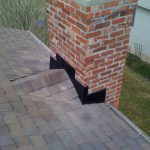
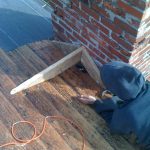
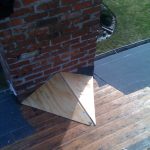
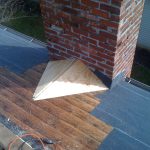
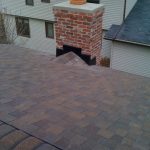
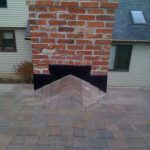
How to Tell if Your Chimney Needs a Cricket
Not every chimney requires a cricket, but there are a few clear signs yours probably does.
Here’s a good rule of thumb:
If your chimney is thirty inches wide or more, a cricket isn’t optional—it’s essential. Most building codes require it at that point, and for good reason. A chimney that wide becomes a wall in the middle of your roof. Without a cricket, water and debris will constantly collect behind it.
2. Your Chimney Is on the Downhill Slope
Water stains on your ceiling near the fireplace? Flashing repairs that don’t seem to hold up? That’s often the result of water sneaking in behind the chimney. Even if flashing looks fine from the ground, water sitting in that area wears everything down over time.
4. You Live in a Snowy or Rainy Area
A properly built cricket isn’t just slapped together. It should be:
- Framed with the right pitch to split water evenly
- Covered with matching roofing material
- Integrated with flashing and underlayment
- Sized correctly based on chimney width and roof slope
Final Thought: It’s a Small Structure That Solves a Big Problem
A chimney cricket is one of those things you never notice—until you don’t have one and start dealing with leaks, rot, or mold.
If you’re replacing your roof, ask your roofer if your chimney needs a cricket. And if you’ve had ongoing issues near your chimney, this could be the missing piece that finally solves it for good.
